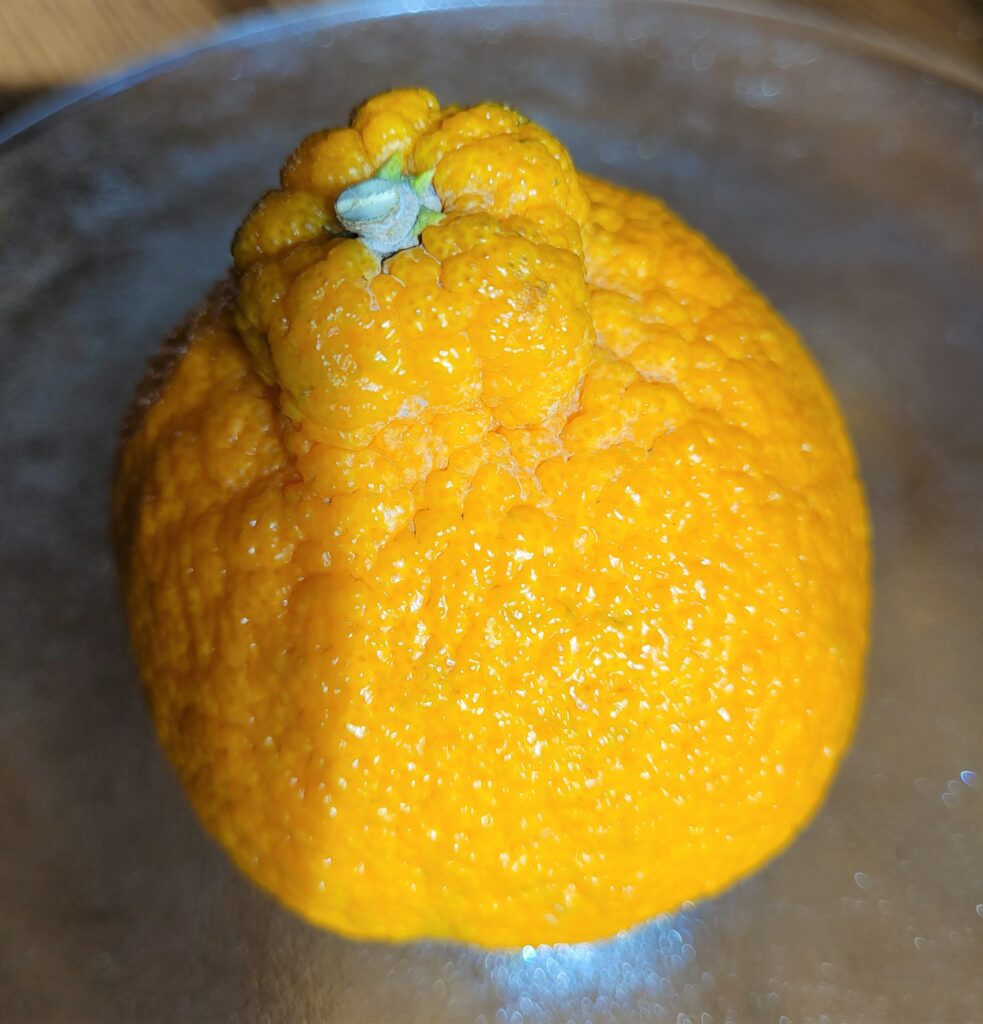I’ve been checking out the Sumo Citrus fruit at my local organic food market for the last couple of weeks. Sumo Citrus are not an orange. They are derived from Satsuma, orange and mandarin crossbreeding.
So, I purchased one to check it out today and give it a taste test.
Fruit Details
Sumo Citrus are originally from Japan. The fruits are known for their large size, sweetness, and top knot. They are available for purchase from January to April. They are easy to peel, are seedless and have an orange bumpy-looking skin.
I’ve read online that get their name from Sumo wrestler in Japan and their signature top-knot hairstyles.

Brief History of Sumo Citrus
Originally, the citrus fruit was cultivated in Japan in the 1970’s. It was imported to the United States in 1998 where is is mainly grown in the area of San Joaquin Valley in California.
Trees Difficult to Grow
Online it states, that Sumo trees are hard to grow. First they need sufficient water during drought or dry spells. The trees also need sun protection in the summer’s hot days. From bloom to fruit, it takes about eight months for Sumo to come to fruition.
Also, trees need protection from winds, rain, fungus and freezing not to mention they also need pruning.
Because of the above, these fruits are usually more expensive than other citrus fruits.

Sumo Citrus Taste Test
My taste test reveals, as noted above, it is easy to peel. It does have an intense sweetness to the sections, is juicy, large in size, and has a nice orangish smell. I paid $2.50 for one fruit, so it is a little more expensive than some of the other citrus fruits in my particular store.
I rarely, if ever, see this fruit in the market, so I was happy to buy one to taste.
In checking food sites, their juice makes nice vinaigrette, spritz cocktails, or an upside down citrus cake plus other sweet and savory dishes.
Nice to eat, juicy & great flavor.
Resource Sites: wwweatwell.com and sumocitrus.com

